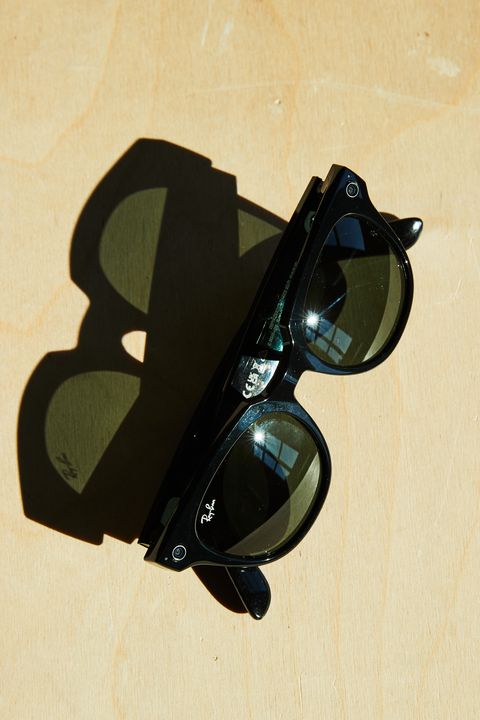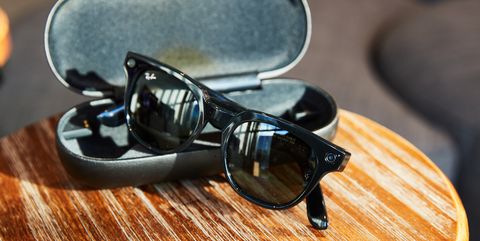The Takeaway: Ray-Ban’s partnership with Meta has resulted in Stories Smart Glasses, sturdy eyewear with a classic look that’s packed with audio and camera technology. The Stories are the ideal fit if you want a comfortable yet discrete wearable for listening to music and capturing video.
- Classic look and feel
- Discreet open-ear speakers with three built-in microphones
- Takes pictures and video
- $299
I bought my first pair of Ray-Ban sunglasses (the RB4165 “Justin” frame) back in my freshman year of high school. They have survived 10 years of pickup basketball, beach wear, and countless motorcycle trips—serving as a staple in my wardrobe to this day. So when Meta (formerly Facebook) partnered with Ray-Ban to pack the latest audio and camera technology into classic styles like the Wayfarer and Meteor silhouettes, I wanted to see if my favorite glasses could become truly “smart.” In short, they have—feeling as lightweight as a pair of regular Ray-Bans while boasting connected features.
I’ve spent the past few months testing the Stories smart glasses in rain, snow, and sunshine. In that time, they virtually replaced my phone and BeatsFit Pro headphones thanks to how they function as wireless headphones, a camera, and a smart assistant. Unlike previous smart glasses attempts from Snap and Bose, the Stories feel like a normal pair of sunglasses without obnoxiously cheap frames or giant plastic arms. Taking a picture or video in the moment or bring up a song feels natural, with intuitive controls. If you’re down with all the info Meta (formerly Facebook) collects, then the lightweight View app makes transferring what you capture and controlling your shades seamless.
To use the glasses, remove them from their protective leather case (which also doubles as a portable charger), put them on, open up the View app on your phone, and pair the two devices with the flick of a slider button on the glasses. I found the glasses’ open-ear audio design to be surprisingly enveloping among the ambient traffic and chatter of Manhattan. Though at normal to high listening volume, some sound did leak through from the speakers on the arms—but barely enough for someone sitting across from me aboard a bus to hear it. And I still got clear backing bass and instruments and vocals, though at the cost of some mild rumbling.
Taking calls with the Story was easy, as I could answer with a tap of my finger on the touch sensor on the right arm. Pressing the button above that same sensor recorded video, while holding it snapped a photo. The 30-second video clips come out at 1184 x 1184 pixels at 30 frames per second. The camera automatically adjusts to the light around you so that you don’t end up with an overexposed image, and still images shoot at a higher 2592 x 1944 resolution.
In the end, these sturdy glasses look great and wear well, living up to the Ray-Ban name. As the first true multi-functional smart glasses, focused neither solely on audio nor visual, they’re a good fit for prolific creators and consumers of media who want that classic styling and a foot in the door of the next phase in wearable tech’s evolution.
This content is created and maintained by a third party, and imported onto this page to help users provide their email addresses. You may be able to find more information about this and similar content at piano.io




No comments:
Post a Comment